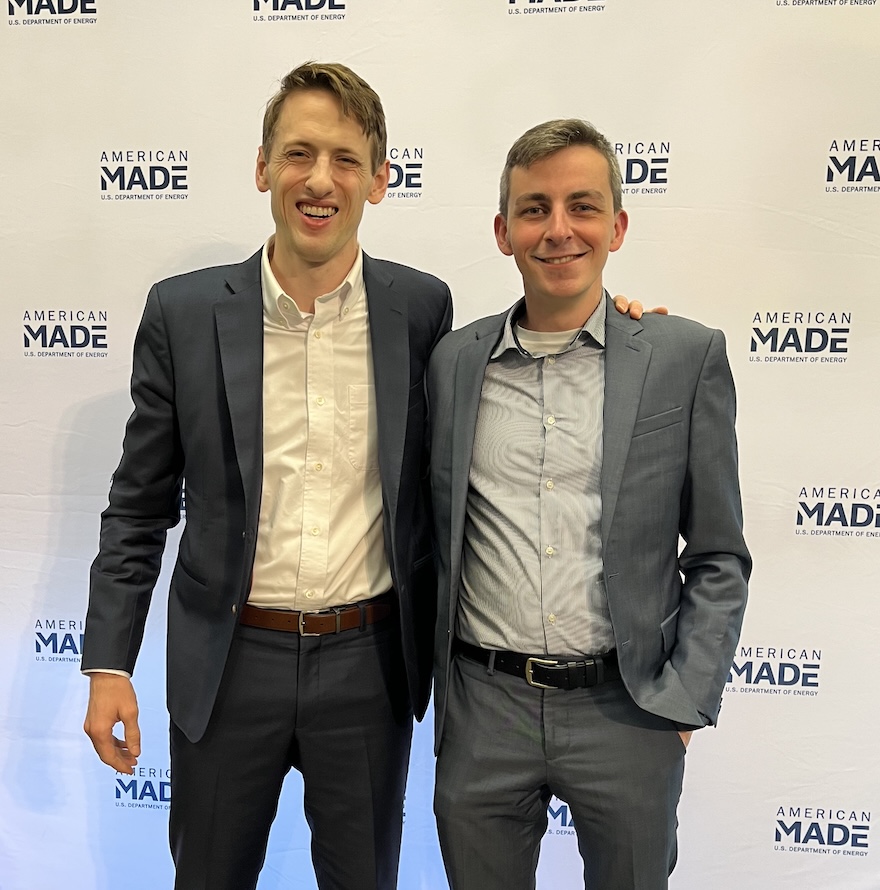Students compete for EnergyTech University Prize
Monica Cooney
Jul 16, 2025

Timmins (left) and Drew at the National Pitch Event.
Batteries power devices that are essential to day-to-day life, from phones to computers to cars. The elements that make up batteries depend on performance needs, and often include “critical minerals,” which are economically and strategically important to the United States, as determined by the United States Geological Survey. Because there is a high demand for these minerals and no convenient substitutes, recycling batteries that have reached end of life has become a means of gathering them for reuse.
A team of two materials science and engineering doctoral students from CMU was selected as a finalist for the 2025 Energy Technology University Prize (EnergyTech UP) organized by the Department of Energy (DOE). Jeremy Drew and Andrew Timmins reviewed a list of technologies that had been developed at DOE National Laboratories, but had yet to be commercialized. After analyzing the available projects, they chose to pursue a cathode recycling technology in order to advance the Lithium-Ion Battery supply chain.
“When batteries are essentially near their end of their life, companies will shred them and create ‘black mass,’ which is essentially all of the useful materials in a battery,” said Timmins. “The idea of this technology is that you can take this black mass and, using an electrochemical process, leech out the materials that are of interest and use them in new battery development.”
Through the project, Drew and Timmins assessed the market potential of this technology and created a business plan for commercialization. The evaluation of their plan then went on to a regional final that was hosted by the Scott Institute for Energy Innovation.
Their business plan assessed the market for potential customers and competitors, analyzed the impact on the energy industry, and addressed potential challenges that would need to be overcome. One such challenge is that different batteries have different compositions of elements, so values of the black mass could fluctuate, creating an impact on the business’s revenue. Another challenge they addressed in their pitch was the forecasts related to the supply and demand of batteries, which vary by source and also are subject to price instability that the market has witnessed in recent years.
“In our economic justification we have to take into account a best and worst case,” said Drew. “But it's also one of the arguments we make of the advantages of having a recycled battery component as opposed to fresh extraction when these shifts happen.”
Creating a pitch for the Prize has given the both students a chance to go beyond their work in the classroom and lab to understand the entrepreneurial side of materials science.
“There's so many ways in which this has been different from research,” said Timmins. “We have had to make so many approximations and estimates with limited data and try to gain a better understanding of process costs, so it’s a very new skillset to develop in some ways.”
As finalists, Drew and Timmins were awarded $5000 and were invited to attend the National Pitch Event this summer at the Colorado School of Mines, where they delivered their final pitches to a panel of industry stakeholders and DOE Office of Technology Commercialization leadership.
